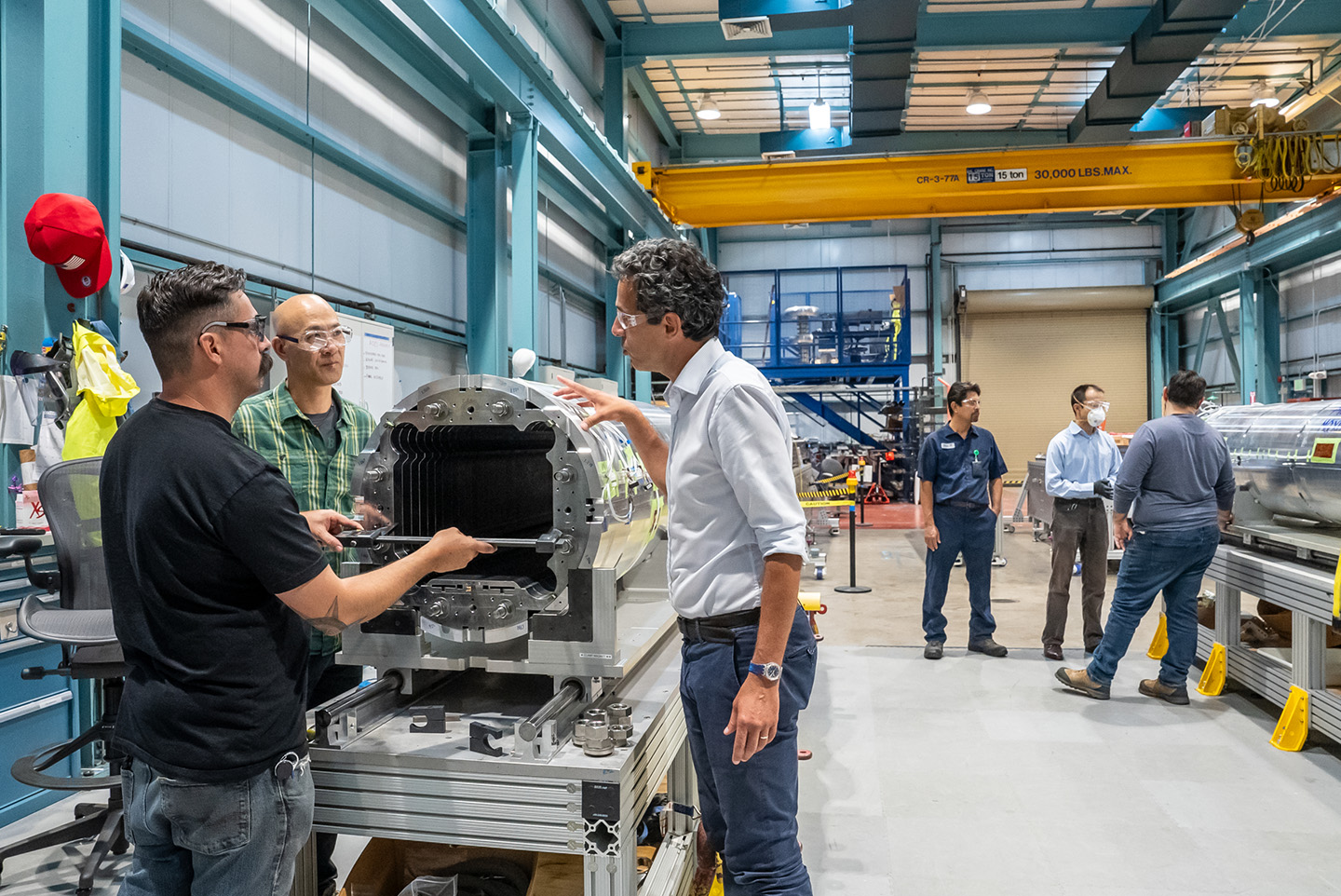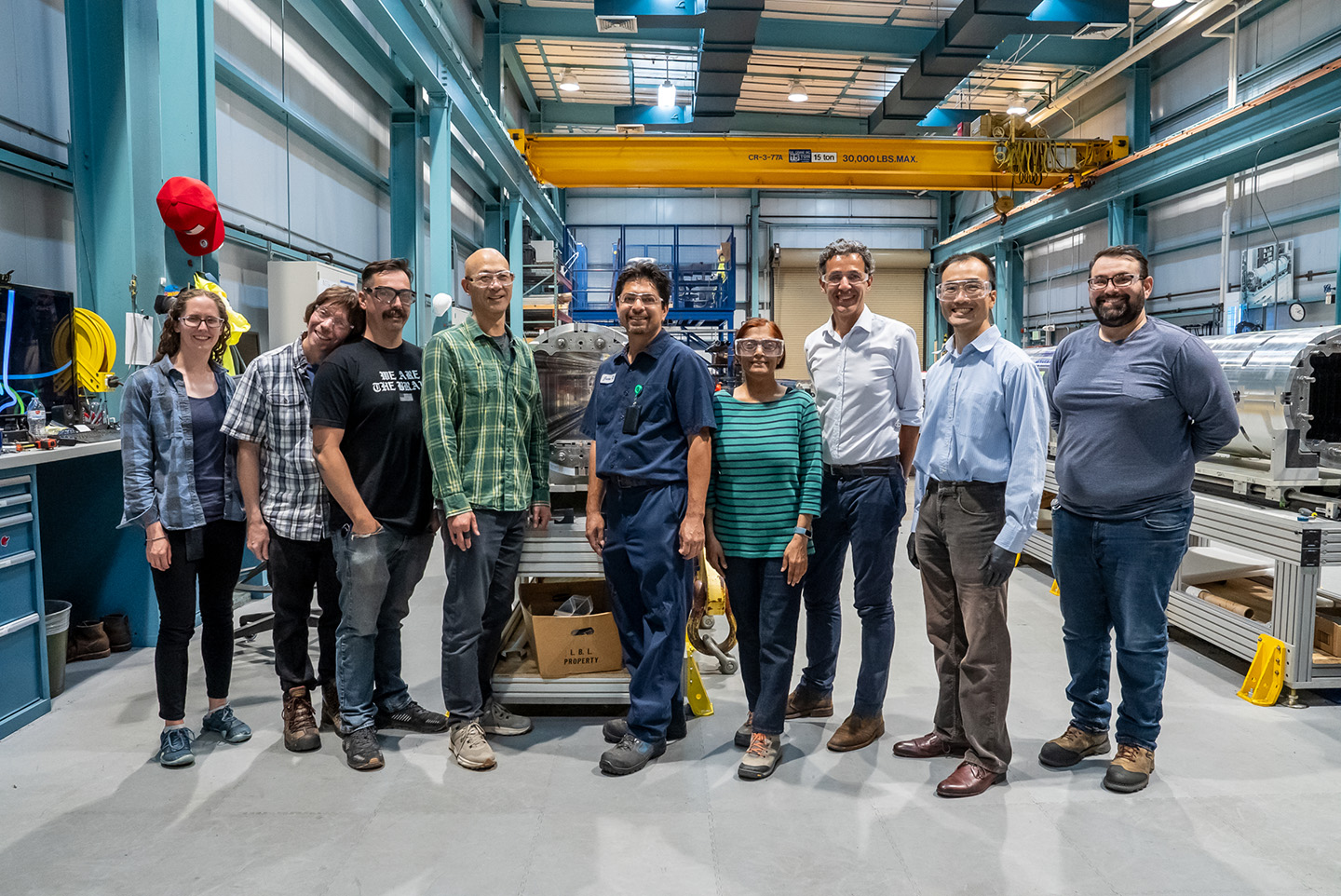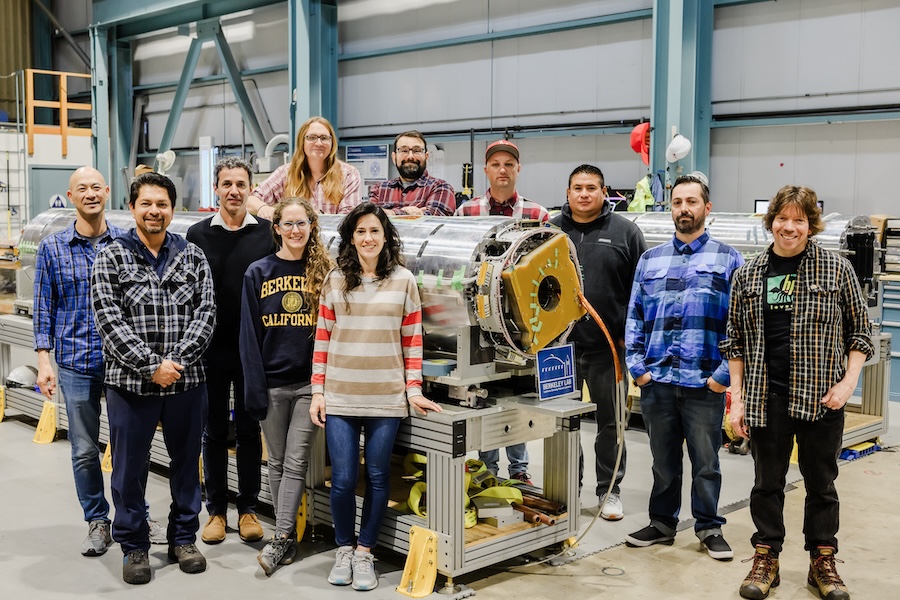A team from the Accelerator Technology & Applied Physics (ATAP) and Engineering Divisions at Lawrence Berkeley National Laboratory (Berkeley Lab) has assembled and tested 11 of the 20 new superconducting magnets for installation at the Large Hadron Collider (LHC), the world’s most powerful particle collider. These magnets utilize niobium-tin (Nb3Sn) technology, which can produce much stronger magnetic fields to focus particle beams more tightly and promises to extend the capabilities of the LHC, leading to advances in fundamental scientific research and new discoveries in high-energy and particle physics.
The work is part of the ongoing contributions of the U.S. Accelerator Upgrade Project to the High Luminosity LHC Accelerator Upgrade Project, or HL-LHC-AUP, which aims to increase the luminosity of the LHC significantly. The P5 report, released in December 2023, highlighted that the HL-LHC-AUP is “proceeding successfully with critical U.S. contributions” and will focus on addressing “key questions about the Higgs boson while searching for new particles and phenomena.”
“This achievement marks another significant milestone for the LHC upgrade and comes after the successful delivery of the first U.S.-built magnets to CERN last December,” says ATAP Division Director Cameron Geddes. “The team is doing an excellent job in building these more powerful magnets, which will enhance the performance of the LHC and push the frontiers of scientific research and exploration.”
The magnets are the result of nearly two decades of dedicated R&D in Nb3Sn technology and represent a collaborative effort involving CERN in Switzerland and four U.S. national laboratories: Berkeley Lab, Brookhaven National Laboratory (BNL), the National High Magnetic Field Laboratory at Florida State University, and Fermi National Accelerator Laboratory (Fermilab).

Berkeley Lab is responsible for producing the Rutherford cables for the coils, acquiring the structural components, and assembling the magnets. Once installed, these will be the first Nb3Sn-based magnets used in a particle accelerator and will increase the LHC’s luminosity by a factor of ten.
“Luminosity is a crucial measure of the LHC’s performance, as it is directly related to the number of collisions that occur within a specific time frame at the accelerator’s interaction region,” explains Paolo Ferracin, a senior scientist and deputy head of the Superconducting Magnet Program at ATAP. “The higher the luminosity, the more data the experiments can collect, allowing them to observe rare or unexpected processes.”
The new Nb3Sn superconducting magnets can generate magnetic fields of up to 12 tesla, significantly stronger than the 8 to 9 tesla produced by the niobium-titanium magnets currently used in the LHC. Installed before the interaction region in the accelerator tunnel, where the particle beams collide, the new magnets will produce denser bunching of the particle beams.
The current beams generated by the Large Hadron Collider (LHC) have a diameter of about 20 microns. However, with the new Nb3Sn magnets, this diameter will be reduced to approximately 10 microns, according to Ferracin. “This decrease in beam size will greatly enhance the likelihood of collisions, enabling more precise measurements of new physics discovered by the LHC, including a better characterization of the Higgs boson.”
The Higgs boson, first observed by the LHC in 2012, is the second heaviest known particle. It was the only fundamental particle predicted by the Standard Model that experiments had not detected before the start of LHC operations. The Higgs boson is key to understanding the origin of mass in the universe.
The upgraded LHC, which will be operational by 2029, is expected to produce at least 15 million Higgs bosons yearly, a significant increase from the approximately three million produced by the LHC in 2017. The heightened number of collisions may also provide valuable insights into other fundamental scientific questions related to dark matter and dark energy.

After being assembled at room temperature, the magnets are cooled and tested at cryogenic temperatures to assess their performance. “Although constructed to the same specifications, each magnet is unique,” explains Daniel Cheng, a mechanical engineer in Berkeley Lab’s Engineering Division and the deputy control account manager for the magnet assembly. “Therefore, we continuously learn about their behaviors and characteristics during assembly and testing.”
He says a multidisciplinary team from the ATAP and Engineering Divisions was required “when assembling and qualifying the magnets at room temperature.” This process, he adds, involves “testing the quality of their magnetic fields, measuring their physical dimensions, and correlating how these measurements relate to our readings and the magnet’s overall performance.”
These steps ensure that the magnets are ready for cryogenic testing at BNL before being sent to Fermilab for installation in a cryo-assembly. These cryo-assemblies consist of two quadrupole magnets—each measuring 4.5 meters long—housed within a stainless steel vessel called the Cold Mass. This vessel ensures the proper alignment of the magnets. It also provides a leak-tight enclosure for the superfluid helium, which cools the magnets to the cryogenic temperatures at which they become superconducting. Surrounding the vessel are cryostat shields, piping, and a vacuum chamber. The cryo-assemblies are shipped to CERN for installation in the LHC.
“This project illustrates the successful collaboration and synergy between experts from the Engineering Division and the ATAP’s Superconducting Magnet Program, who have worked closely to build these powerful magnet structures,” says Engineering Division Director and the Lab’s Chief Engineer, Daniela Leitner.
The remaining magnets will be assembled at Berkeley Lab and delivered to BNL for further testing by the end of 2025. After testing, the magnets will be sent to Fermilab for assembly into the Cold Mass and then shipped to CERN for installation in the ATLAS and CMS detectors of the LHC.
“The luminosity upgrade of the LHC is an extraordinary initiative by CERN, made possible by advancements in superconducting accelerator magnet technology developed through long-standing research programs funded by the Department of Energy, Office of High Energy Physics (DOE-OHEP),” says Soren Prestemon, senior scientist and division deputy for technology in the ATAP Division. “This project is a testament to DOE-OHEP’s strategic vision and the perseverance and dedication of scientists and engineers from CERN, DOE laboratories, and universities involved.”
The research presented here is funded by the Department of Energy’s Office of Science, Office of High Energy Physics.
To learn more …
First U.S.-Built Focusing Magnet for LHC Upgrade Arrives at CERN
Major Milestone in Large Hadron Collider Upgrade
The Challenges and Triumphs of Building Niobium-Tin Magnets
Niobium-Tin Superconductors: Fabrication and Applications
Cabling for LHC Upgrade Wraps Up
For more information on ATAP News articles, contact caw@lbl.gov.
